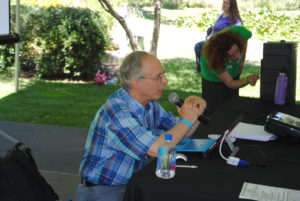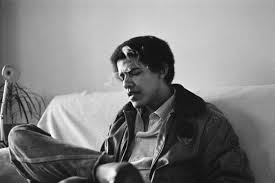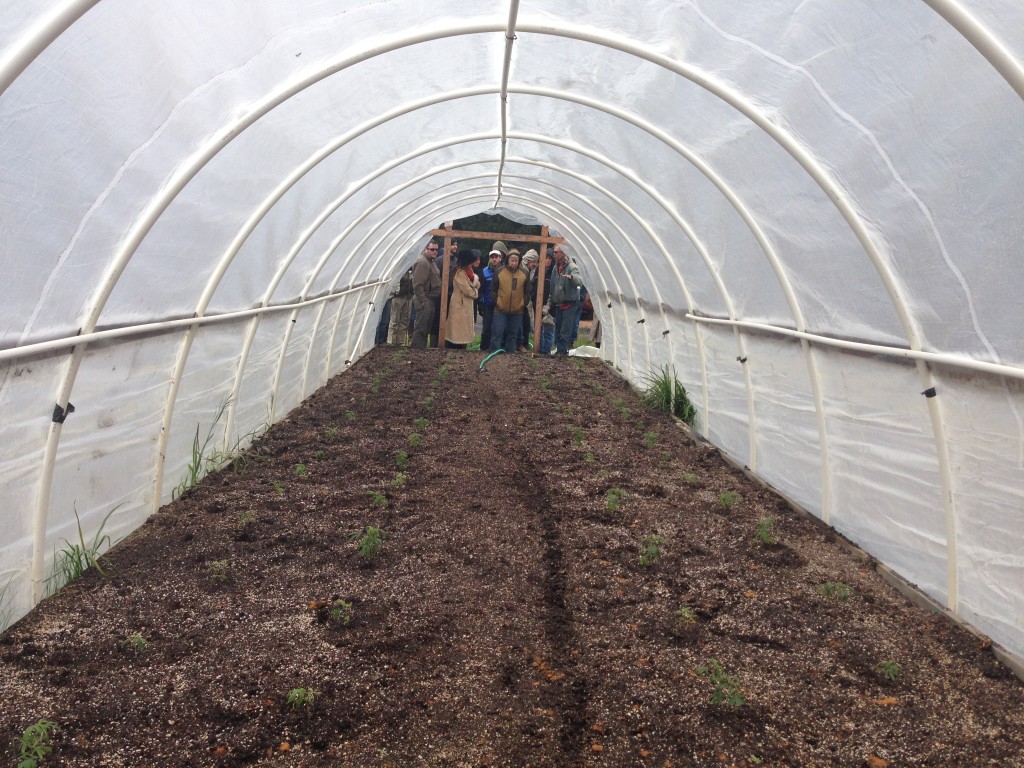
by Dominic Corva, Social Science Research Director
I have written a great deal this year about the difference between medical cannabis politics and legal cannabis politics, which are the two most powerful expressions of post-prohibition politics available in the U.S. today. I say this because it is these two forms that have successfully rolled back prohibition laws and practice, so far in the form of voter initiatives between 1998 and 2016. Let’s get concise about their definitions, which are drawn from the legitimating discourses that have accompanied their formal electoral victories. I’m also going to do something controversial and say that these are primarily logics of production and distribution, rather than consumption. I will address this omission as I go along.
Legal cannabis politics are defined by one, and only one discourse of legitimacy, even if it’s two words: Tax and Regulate. The reason there are two words is because they literally cannot exist without each other, Oregon’s brief experiment notwithstanding: cannabis must be regulated by the State for the State to lay claim to revenues associated with its markets. And the cost of implementing regulation isn’t coming from extra cash the public sector has lying around: it has to be taxed in order to be regulated. And it’s the fact that cannabis is taxed and regulated that legitimates the freedom to consume, not the other way around.
Medical cannabis politics are defined by two multiple and sometimes contradictory discourses of legitimacy.
- This is because the word “medical” has multiple and sometimes contradictory meanings in our society. The dominant discourse of legitimacy around “medical” in this country is “professional”: medicine is practiced by experts authorized by their objective distance from, not relationship with, patients as the subjects of their care. Professional medicine is sometimes contradictory and multiple because many medical professionals are militant, preferring pharmaceutical-industrial standardized health care in which patients are objects of care rather than subjects with expertise on what is happening to their own bodies. And many medical professionals are heterodox, constantly observing available evidence to support or reject other approaches to care and the patient’s own subjective care of the self. Let’s call this form of medical politics “industrial” or “pharmaceutical” medicine. For militant pharmaceutical politics, what seems to work for patients is irrelevant, because they have not been to medical school and are not licensed by formal authorities. The doctor knows best. This works pretty well in a country where medical care is practiced by strangers on strangers — how can doctors know of this object of care is lying or being duped? There is no relationship of trust to work from.
- Since the 1960s, the practice of medicine by “objective” experts has been challenged formally by a movement within the US for the freedom to practice what are formally called “alternative and complementary” approaches to health. These include traditional and non-Western approaches to healthcare, and usually involve herbal (simply processed whole plant, retaining complex molecules) rather than pharmaceutical (technologically molecularized and standardized) medicine. Let’s call this form of medical politics “herbal” or “traditional” medicine. Herbal medicine is by definition a fuzzy category, encompassing Chinese, indigenous, woman-centered (think midwifery), and a host of other practices that have nothing to do with each other but share one bit of common ground: the freedom of the patient, the subject of care, to choose what seems to work for them. This works pretty well in social context where the caretaker and the cared-for know and trust each other — a pre-industrial context that isn’t at all extinct but pretty common if not majoritarian in this particular country. Lots of people do have primary care physicians, or the same doctor all their lives, but it’s relatively unusual in a privatized health care system rather than a public health care system. Lots of people who can’t afford healthcare go years without seeing a doctor, and follow jobs and career opportunities to distant places.
So we have two categories of cannabis politics, within which one of these categories is internally inconsistent and potentially at odds. It should be easy to note here that they don’t have to be at odds, but they are structurally produced at odds in the rest of society so why wouldn’t they be for cannabis as well.
These two categories of politics also don’t have to be at odds. There is nothing in the legal cannabis political paradigm that demands one form of medical politics over the other; or that cannot accommodate cannabis as medicine. So why are we at a point where the promotion of legal cannabis seems to be accompanied by a demand for one kind of medical politics, industrial-pharmaceutical, over the other? And why are we at a point where medical cannabis politics are afraid of and resist legal cannabis politics?
The answer lies in the difference between discursive political logics — the reasons stated for moving beyond prohibition politics — and the material support available to these logics.
- Legal cannabis politics have been, until Ohio’s failed 2015 attempt, funded primarily by “grass-tops” organizations interested primarily in cannabis politics as a form of civil rights politics. This is materially expressed as a matter of criminal justice reform. The Drug Policy Alliance concerns itself with “open society” civil rights, where the ACLU concerns itself especially with mass incarceration and criminal justice reform. Neither organization cares the slightest what the politics of legal cannabis are, whether they are in conflict with medical or economic politics. Both are focused on rights, not justice, and it’s not the rights of cannabis users that of concern. And we wouldn’t have post-prohibition laws without them. Cannabis user organizations, primarily NORML, failed spectacularly to legalize cannabis in the 1970s, when they had the chance. They didn’t just fail, they failed hard — our national cannabis politics turned authoritarian in a way that would have blown every anti-war hippie’s mind. For a decade, no one thought the right to consume cannabis had any relevance as a political discourse in this country until grassroots mobilizations like the Cannabis Action Network, funded by illegal pot dealers like Steve Deangelo, emerged at the end of the 1980s. And while these were emergent, they may or may not have been destined for irrelevance.
- Contemporary Medical cannabis politics emerged out of the HIV/AIDS crisis at the end of the 1980s and 1990s. The Bay Area, as an enclave of cannabis consumer politics, was also the center of HIV/AIDS politics in the context of a national failure to care for a certain kind of sick person — people with different sexual orientations. That’s the alchemy embodied in the life and work of Dennis Peron, who started California’s Prop 215 effort that was carried to completion by Drug Policy Alliance. The national failure to care for people of different sexual orientation was, let’s be clear, totally homophobic and in that sense pre-Enlightenment in character. But it was Federal policy to deny that medical cannabis could help dying people in any way shape or form, despite overwhelming evidence to the contrary presented by patient-focused doctors like Tod Mikuryia, who was himself a defector from the Federal industrial-pharmaceutical paradigm. This shameful, genocidal Federal policy was the context for medical cannabis politics and how they changed the politics of every cannabis producer, distributor, and consumer especially on the West Coast, since 1996.
Medical cannabis politics were forged in the fires of a national healthcare emergency, the clear failure of militant pharmaceutical-industrial medicine to care for patients and in fact the transparently unjust politics of anti-care that resulted. The difference between medical ideology and patient care efficacy was never so clear to State publics in American history, and voters responded by passing extremely broad decriminalization statutes in the late 1990s. The politics of medical cannabis achieved something that the politics of rights had failed (maybe even destroyed), which was the legitimacy of post-prohibition cannabis politics.
What followed, for the next 10 years, was a period in which legal protection may not have been guaranteed, but it opened the possibility for people — not just patients, but providers — to legally protect themselves. And in the United States, that mean lawyers had a whole new field of work, too, challenging the legality of prohibition-policing. And patients, as consumers, became able to self-provision on the one hand and become more directly connected to cannabis producers on the other.
This is because, economically, the legal shield created by broad medical decriminalization acted as an international Industrial Policy. Cannabis producers here began to truly compete with historically international imports, which by the mid-1990s were primarily from Mexico and produced after the fashion of large-scale industrial agriculture. Domestic sinsemilla prices fell dramatically between 1996 and 2010, from $6000/lb wholesale to $1200/lb. In 2010, a California drug task force use a UN methodology to estimate that 60-80% of U.S. cannabis consumption was being supplied by California growers. They intended this message to support more eradication and interdiction within California, but in so doing they highlighted an unintended consequence with enormous socially beneficial implications: the economic weakening of Mexican drug trafficking organizations. Of course, the subsequent focus of Mexican DTOs on the coca-cocaine commodity chain would contribute to massive political and economic destabilization we still see today in Mexico after the Calderon Administration took power in 2006.
This is an ongoing dynamic. We are still capturing share from international organized crime, especially since the price crash of 2010 made our high quality cannabis prices competitive with those of Mexican brickweed.
So the political economy of medical cannabis production remains relevant, even while it has become politically controversial with respect to the political economy of legal cannabis.
The aim of this essay is to identify conflicting post-prohibition cannabis politics, on the one hand, and seek a synthesis in which those conflicts are resolved, because they are not necessary. If they aren’t necessary, they are political — subject to alternative approaches but limited by available material support for such approaches.
Material support for post-prohibition politics have been transformed by the creation of legal cannabis markets through the funding of organizations that do not give a damn about legal cannabis markets, other than that they be taxed and regulated. How they are taxed, and how they are regulated, is where the different political approaches materialize.
With legalization comes a whole new set of actors that choose how to influence how cannabis is taxed and regulated. This set of actors is just like the set of actors that influence how everything else in society is organized: with money paid to lobby legislators in the interest of profit. The failed 2010 Ohio initiative was their first material effort, but the successful 2016 California initiative is their first material victory, a model for future successful post-prohibition change.
The private sector, most prominently Facebook moguls Sean Parker and Peter Thiel, rather than grasstops NGOs played the pivotal funding and messaging role for Prop 64. Up until the spring of last year or so, this was not the case. Prop 64 was a DPA initiative, until Sean Parker’s support of the DPA initiative was inverted into DPA support for Sean Parker’s initiative. It seems that at some point, DPA’s Prop 64 funding (at the time, quoted to me at $5 million) seemed to be mostly coming from Parker anyway, so Parker and the DPA decided to invert control. It’s not clear how much this changed the initiative itself, but for growers the main regulatory difference between MCRSA (an overhaul of 1998’s broad statute passed in 2015 by the legislature) is the permittable size of regulated grow operations. These are now 5 acres, as opposed to say Washington’s largest permittable legal grow at 30,000 square feet.
It should be stressed that this is substantially different from the failed Ohio initiative, which sought a 10-person monopoly for cannabis production. And it’s also substantially different from agricultural regulations, which don’t to my knowledge put any limit on how big one’s farm can be.
The main critique of this private-sector-led regulatory approach is that it creates an economic injustice problem. This is a controversial perspective, and strongly divided advocate support for Prop 64 in California. Many cannabis consumers really don’t care how their cannabis is grown or by whom, as long as they don’t risk prison to possess or consume it. And consumers outnumber cannabis producers and distributors who this affects, by tens of millions.
The fact that cannabis legalization seems now to mean agricultural economic centralization doesn’t bother most Americans, much less most cannabis consumers. This is a political problem, for supporters of economic justice at large — not just supporters of decentralized cannabis production.
We can think of this as parallel to the industrial/traditional medicine conflict. Heterodox industrial medical professionals and herbal medical practitioners have made tremendous progress towards institutionalizing the legitimacy of herbal/nonWestern/traditional medicine since the 1960s (it’s not a coincidence, eh hippies).
Now, the minority politics of economic justice for cannabis producers has to find and work with the minority politics of economic justice in the U.S. and, I might add, the rest of the world. Your arguments are theirs. They don’t seem to have made much headway in the U.S., given the dominance of Consumer politics through the most marketized society the world has ever known. It doesn’t matter how our food is producer, where, or by whom: what matters to the U.S. Consumer is the lowest price and the greatest ease of access for everything.
The most successful economic justice movement of our time, and that’s not saying much but it does say a lot about the politics of possibility, is the Conscious Consumer movement. Conscious consumption politics reject the militant absolutism of low prices, and express their preference for commodities that may be more expensive, but are successfully branded as “Free Trade,” “Organic,” “small-scale,” “local,” and so forth. This is not a politics that is outside the system: it’s quite capitalist and depends on conscious brands to be able to succeed in highly competitive marketplaces. It’s “postcapitalist” in the sense that while exchange value (price) still dominates the logic of transaction, it’s not the only value that matters for the transaction.
That means that there is an alternative to conflicting economic politics of post-prohibition. It won’t happen naturally, and it won’t be terribly successful without coordinated organization that learns from the Fair Trade movement et al.
But let’s put a name to it, provisionally, as a heterodox political discourse. We need something that captures the common ground of lots of different logics at work here. Let’s call it Whole Economy politics, for now, because I need that to make this final point.
Cannabis markets are relevant to cannabis medical politics because there would be no medicine, in either the traditional or pharmaceutical fashion, without the black, gray, and white markets that give patients (as well as “adult users”) access to outcomes that challenge the basic premise of cannabis as a Schedule I controlled substance, without medical value.
Many medical cannabis patients respond well to non-standardized cannabis consumption. Many medical cannabis patients respond well to more standardized, refined cannabis products. The politics of medical cannabis that seems not only most appropriate but reflective of existing medical politics tolerate a heterodox and alternative approach to medicine, focused on patient experience and reports as well as double-blind clinical trials. There’s room for both, politically, and technically to rid our society of the harm of prohibition — all of it — it makes no sense to prohibit herbal and patient-focused approaches to cannabis medicine. It’s not only unnecessary, it is contrary to ending the drug war. Let’s call this heterodox approach “Whole Medicine” medical politics. It really means not excluding alternative and complementary approaches to modern medicine, when it comes to cannabis. So, everything.
In a parallel fashion, absent logical irregularities most evident in the Washington model’s ban on home grows and strict possession limits, there’s room for decentralized market production. We still have our Tier 1, 3000 square foot legal cannabis producer license here in Washington, and somehow many of these remain in business. The prospect of commodity-style industrial production (which is WAY bigger than even our largest, formally prohibited but materially tolerated multiple license operations) is a Bummer for decentralized production. But craft cannabis producers can carve out and grow market space, generally by organizing cooperatively and mastering “Whole Economy” branding.
The parallel logics converge on the concept and the practice of the “Whole, ” or holistic social organization. The logics are inclusive, cooperative, creative, and open space for experiments in creating a better approach to medicine, the economy, and society at large.
When it comes to cannabis, Whole Economy politics and Whole Medicine politics are really about cannabis as a plant with which our species has had a largely peaceful and mutually beneficial coexistence, with some exceptions, until the 20th century rolled around. Michael Pollan’s Botany of Desire (1995) really made this point well, and not just with respect to cannabis.
So I suggest that there is a concept that can be named, that includes all peaceful approaches to creating a post-prohibition society: Whole Plant Politics. The challenge is to define peaceful approaches that move us towards the moment when cannabis is just a plant, and doesn’t require politics at all to grow. This is our task for 2017 and beyond.




